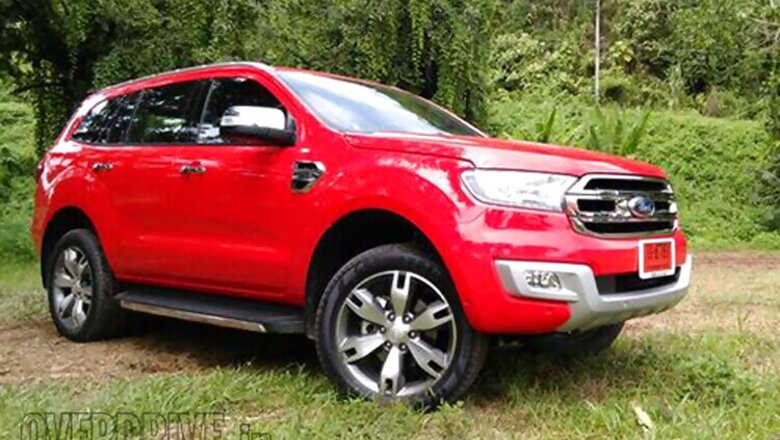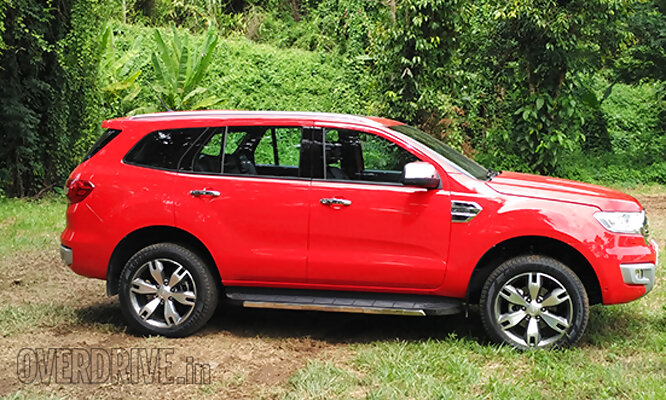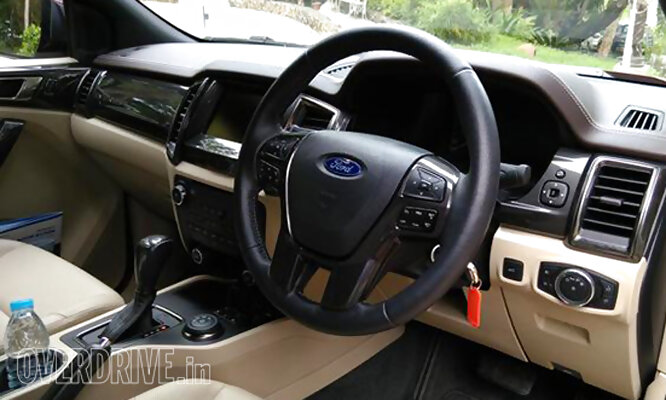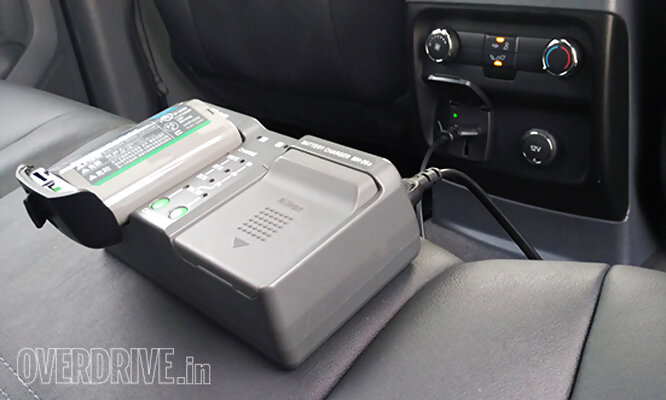
views
The affordable end of the market for a three-row or seven-seater SUV has fairly limited choices. Affordable isn’t really the catch word here because these SUVs until now existed in the plus Rs 15 lakh bracket.
But the full size SUV segment as we as we know it, at an entry point of around Rs 20 lakh, was dominated by Ford’s Endeavour and GM’s Chevrolet Captiva. Both these vehicles were quite outdated and we know upgrades are on their way.
I’ve just driven the first of these which is the new Endeavour that’s expected to be launched in India just around the festive season. It’s also known as the Everest in the over-190 markets it retails in. India is the only country in that lot where, due to several legal issues with a certain spice-maker and some other brands, the name Everest cannot be used.
Nonetheless, the existing Endeavour, which is roughly around three years past its sell-by date, is finally up for a change.

The new Ford Endeavour, jointly developed by teams from Australia, South America and South East Asia, is an all-new product started off on a clean slate and with no past baggage.
The Endeavour is a handsome product – imposing, good looking and well tailored. It’s certainly a significant change in design direction compared to the SUV it replaces. The lines aren’t boxy or rigidly angular any longer.
It’s more curvy with softer edges and a contemporary silhouette. It’s not attractive but it can and will grab attention, thanks to a strong frontpend design. The spec I drove in Thailand came with 20-inch (and I must add, very striking) alloy wheels and tyres which fill the wheel wells substantially, but expect smaller rim and tyre sizes for India, specifically the 18-inchers. This will, of course, drop the ground clearance marginally but cosmetically, the effects may be more adverse.
Inside the new Ford Endeavour is a very contemporary and handsome cabin. The dashboard, though sharply horizontal, has smooth rounded edges which makes it look soft but upmarket. The India-spec car will come with the two tone beige black interior which makes the cabin look even roomier than it already is.

Build quality here in Thailand is quite impressive with tight shut lines and even gaps where visible. The dashboard is dominated by two elements, a scarlet laid out centre console and a good looking steering wheel.
The centre console is a three-layered unit, at the very top is the new and large infotainment touchscreen. It’s quite intuitive and features Ford’s proprietary second generation Sync system. Below that is the audio and climate control function and then the panel drops into a storage bin also housing aux and USB connectivity ports.

On the transmission tunnel, northeast of the gear lever (manual or automatic) is placed Ford’s new Terrain Management System. I will come back to explaining what that unit does but for now it is starkly similar to the unit found on Land Rover and Range Rover SUVs. The steering wheel on the other hand is a fairly busy component with several switches on the two arms that control various functions, audio and cruise control included.
However, we aren’t certain yet if cruise control will be offered to Indian customers which means you might just see some blank dies unless Ford has another steering wheel design for our market. The steering wheel, interestingly, can only be adjusted for height and not reach. The instrument cluster behind the steering wheel has a large multi-function display screen on the right edge that shows car system information. To its left is the speedometer and further left is another screen that displays entertainment and phone functions.
Coming to the interior space, there are three rows of seats and the first two are adjustable for reach and recline. The front seats are powered and height adjustable as well but the second row is manually adjustable. The third row cannot be adjusted but they are also electronically powered to fold down. With the third row folded up, there is limited space in the boot, but fold down that row and you get an enormous amount of space.
Read more on Overdrive.

















Comments
0 comment